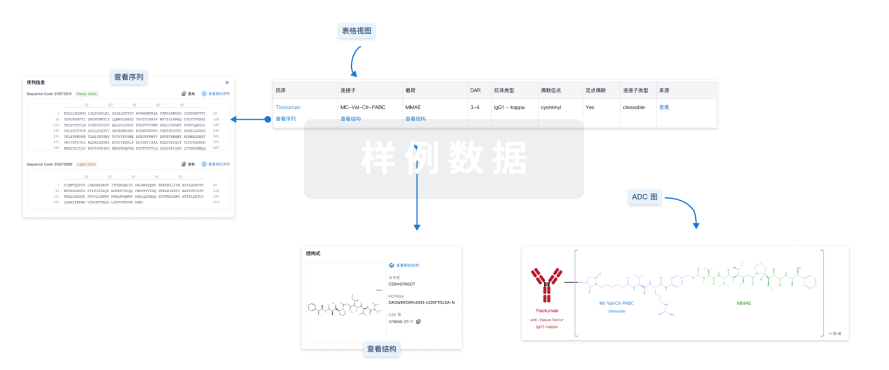预约演示
更新于:2025-11-29
[68Ga]NODAGA-RGD
更新于:2025-11-29
概要
基本信息
非在研机构- |
权益机构- |
最高研发阶段临床1/2期 |
首次获批日期- |
最高研发阶段(中国)- |
特殊审评- |
登录后查看时间轴
结构/序列
使用我们的ADC技术数据为新药研发加速。
登录
或

关联
5
项与 [68Ga]NODAGA-RGD 相关的临床试验EUCTR2018-001224-19-SK
Non-invasive in-vivo prediction of therapeutic response to inhibitors of angiogenesis using gallium (68Ga) NODAGA-RGD PET/CT - Angio PET
开始日期2019-02-11 |
申办/合作机构- |
EUCTR2018-001016-30-AT
PROSPECTIVE STUDY OF 68GA-NODAGA-RGD-PET FOR THE NON-INVASIVE DETERMINAITON OF THE INTEGRIN avß3 EXPRESSION IN PATIENTS WITH UNTREATED OR RECURRENT BREAST CANCER, COLORECTAL CANCER, NON-SMALL CELL LUNG CANCER OR NEUROENDOCRINE TUMORS - 68Ga-NODAGA-RGD-PET for tumor imaging
开始日期2018-12-11 |
申办/合作机构- |
EUCTR2014-004392-23-FI
68Ga-NODAGA-RGD cardiac PET in patients with acute myocardial infarction or chronic total coronary occlusion
开始日期2018-02-08 |
申办/合作机构 |
100 项与 [68Ga]NODAGA-RGD 相关的临床结果
登录后查看更多信息
100 项与 [68Ga]NODAGA-RGD 相关的转化医学
登录后查看更多信息
100 项与 [68Ga]NODAGA-RGD 相关的专利(医药)
登录后查看更多信息
3
项与 [68Ga]NODAGA-RGD 相关的文献(医药)2016-10-01·Molecular imaging and biology3区 · 医学
Comparison of Ga-68-Labeled Fusarinine C-Based Multivalent RGD Conjugates and [68Ga]NODAGA-RGD—In Vivo Imaging Studies in Human Xenograft Tumors
3区 · 医学
Article
作者: Rangger, Christine ; Laverman, Peter ; Decristoforo, Clemens ; Haubner, Roland ; Petrik, Milos ; Haas, Hubertus ; Zhai, Chuangyan ; Summer, Dominik ; Franssen, Gerben M
PURPOSE:
Multimeric arginine-glycine-aspartic acid (RGD) peptides have advantages for imaging integrin αvβ3 expression. Here, we compared the in vitro and in vivo behavior of three different Ga-68-labeled multimeric Fusarinine C-RGD (FSC-RGD) conjugates, whereby RGD was coupled directly, via a succinic acid or PEG linker (FSC(RGDfE)3, FSC(succ-RGD)3, FSC(Mal-RGD)3). The positron emission tomography/X-ray computed tomography (PET/CT) imaging properties were further compared using [(68)Ga]FSC(succ-RGD)3 with the monomeric [(68)Ga]NODAGA-RGD in a murine tumor model.
PROCEDURE:
FSC-RGD conjugates were labeled with Ga-68, and stability properties were studied. For in vitro characterization, the partition coefficient, integrin αvβ3 binding affinity, and cell uptake were determined. To characterize the in vivo properties, biodistribution studies and microPET/CT were carried out using mice bearing either human M21/M21-L melanoma or human U87MG glioblastoma tumor xenografts.
RESULTS:
All FSC-RGD conjugates were quantitatively labeled with Ga-68 within 10 min at RT. The [(68)Ga]FSC-RGD conjugates exhibited high stability and hydrophilic character, with only minor differences between the different conjugates. In vitro and in vivo studies showed enhanced integrin αvβ3 binding affinity, receptor-selective tumor uptake, and rapid renal excretion resulting in good imaging properties.
CONCLUSIONS:
The type of linker between FSC and RGD had no pronounced effect on targeting properties of [(68)Ga]FSC-RGD trimers. In particular, [(68)Ga]FSC(succ-RGD)3 exhibited improved properties compared to [(68)Ga]NODAGA-RGD, making it an alternative for imaging integrin αvβ3 expression.
2013-01-01·Nuclear medicine and biology4区 · 医学
[68Ga]NS3-RGD and [68Ga] Oxo-DO3A-RGD for imaging αvβ3 integrin expression: synthesis, evaluation, and comparison
4区 · 医学
Article
作者: Milos Petrik ; Hans-Jürgen Pietzsch ; Gesine Seidel ; Clemens Decristoforo ; Roland Haubner ; Irene Virgolini ; Peter A. Knetsch ; Christine Rangger
INTRODUCTION:
⁶⁸Ga-labeled RGD peptides in combination with PET allow non-invasive determination of α(v)β₃ integrin expression which is highly increased during tumor-induced angiogenesis. The aim of this study was to synthesize and evaluate two RGD peptides containing alternative chelating systems, namely [⁶⁸Ga]NS₃-RGD-RGD and [⁶⁸Ga]Oxo-DO3A-RGD and to compare their in vitro and in vivo properties with [⁶⁸Ga]DOTA- and [⁶⁸Ga]NODAGA-RGD.
METHODS:
Syntheses of both radiotracers followed standard SPPS protocols. For in vitro characterization distribution coefficients, protein binding abilities, serum stabilities, and α(v)β₃ integrin binding affinities were determined. For in vitro tests as well as for the biodistribution assay α(v)β₃ positive human melanoma M21 and α(v)β₃ negative M21-L cells were used.
RESULTS:
⁶⁸Ga-labeling of NS₃-RGD resulted in good radiochemical purity, whereas HPLC analysis showed two peaks with a ratio of 1:6 for [⁶⁸Ga]Oxo-DO3A-RGD. Distribution coefficients were -3.4 for [⁶⁸Ga]Oxo-DO3A-RGD and -2.9 for [⁶⁸Ga]NS₃-RGD. Both radiotracers were stable in PBS solution at 37°C for 2 h but lack stability in human serum. Protein binding was approximately 40% of the total activity for [⁶⁸Ga]NS₃-RGD and 70% for [⁶⁸Ga]Oxo-DO3A-RGD, respectively, resulting in high blood pool activities. Biodistribution assays confirmed these findings and showed an additional high uptake in liver and kidneys, especially for [⁶⁸Ga]NS₃-RGD. Furthermore, [⁶⁸Ga]Oxo-DO3A-RGD showed nearly the same activity concentrations in α(v)β₃ positive and α(v)β₃ negative tumors.
CONCLUSIONS:
[⁶⁸Ga]Oxo-DO3A-RGD and [⁶⁸Ga]NS₃-RGD have inferior characteristics compared to already existing ⁶⁸Ga-labeled RGD peptides and thus, both are not suited to image α(v)β₃ integrin expression. Of all our tested RGD peptides, [⁶⁸Ga]NODAGA-RGD still possesses the most favorable imaging properties. Moreover this study shows that the use of appropriate chelators to achieve good targeting properties of ⁶⁸Ga-labeled biomolecules and careful in vitro and in vivo evaluation including comparative studies of different strategies are essential components in designing an effective imaging agent for PET.
2011-07-01·European Journal of Nuclear Medicine and Molecular Imaging
[68Ga]NODAGA-RGD for imaging αvβ3 integrin expression
Article
作者: Fani, Melpomeni ; Knetsch, Peter A. ; Rangger, Christine ; Guggenberg, Elisabeth ; Decristoforo, Clemens ; Griessinger, Christoph M. ; Pichler, Bernd J. ; Petrik, Milos ; Kesenheimer, Christian ; Haubner, Roland ; Virgolini, Irene
PURPOSE:
A molecular target involved in the angiogenic process is the α(v)β(3) integrin. It has been demonstrated in preclinical as well as in clinical studies that radiolabelled RGD peptides and positron emission tomography (PET) allow noninvasive monitoring of α(v)β(3) expression. Here we introduce a (68)Ga-labelled NOTA-conjugated RGD peptide ([(68)Ga]NODAGA-RGD) and compare its imaging properties with [(68)Ga]DOTA-RGD using small animal PET.
METHODS:
Synthesis of c(RGDfK(NODAGA)) was based on solid phase peptide synthesis protocols using the Fmoc strategy. The (68)Ga labelling protocol was optimized concerning temperature, peptide concentration and reaction time. For in vitro characterization, partition coefficient, protein binding properties, serum stability, α(v)β(3) binding affinity and cell uptake were determined. To characterize the in vivo properties, biodistribution studies and microPET imaging were carried out. For both in vitro and in vivo evaluation, α(v)β(3)-positive human melanoma M21 and α(v)β(3)-negative M21-L cells were used.
RESULTS:
[(68)Ga]NODAGA-RGD can be produced within 5 min at room temperature with high radiochemical yield and purity (> 96%). In vitro evaluation showed high α(v)β(3) binding affinity (IC(50) = 4.7 ± 1.6 nM) and receptor-specific uptake. The radiotracer was stable in phosphate-buffered saline, pH 7.4, FeCl(3) solution, and human serum. Protein-bound activity after 180 min incubation was found to be 12-fold lower than for [(68)Ga]DOTA-RGD. Biodistribution data 60 min post-injection confirmed receptor-specific tumour accumulation. The activity concentration of [(68)Ga]NODAGA-RGD was lower than [(68)Ga]DOTA-RGD in all organs and tissues investigated, leading to an improved tumour to blood ratio ([(68)Ga]NODAGA-RGD: 11, [(68)Ga]DOTA-RGD: 4). MicroPET imaging confirmed the improved imaging properties of [(68)Ga]NODAGA-RGD compared to [(68)Ga]DOTA-RGD.
CONCLUSION:
The introduced [(68)Ga]NODAGA-RGD combines easy accessibility with high stability and good imaging properties making it an interesting alternative to the (18)F-labelled RGD peptides currently used for imaging α(v)β(3) expression.
100 项与 [68Ga]NODAGA-RGD 相关的药物交易
登录后查看更多信息
研发状态
10 条进展最快的记录, 后查看更多信息
登录
| 适应症 | 最高研发状态 | 国家/地区 | 公司 | 日期 |
|---|---|---|---|---|
| 颈动脉疾病 | 临床2期 | 瑞士 | 2012-04-01 | |
| 炎症 | 临床2期 | 瑞士 | 2012-04-01 | |
| 动脉粥样硬化斑块 | 临床2期 | 瑞士 | 2012-04-01 |
登录后查看更多信息
临床结果
临床结果
适应症
分期
评价
查看全部结果
| 研究 | 分期 | 人群特征 | 评价人数 | 分组 | 结果 | 评价 | 发布日期 |
|---|
No Data | |||||||
登录后查看更多信息
转化医学
使用我们的转化医学数据加速您的研究。
登录
或

药物交易
使用我们的药物交易数据加速您的研究。
登录
或

核心专利
使用我们的核心专利数据促进您的研究。
登录
或

临床分析
紧跟全球注册中心的最新临床试验。
登录
或

批准
利用最新的监管批准信息加速您的研究。
登录
或

特殊审评
只需点击几下即可了解关键药物信息。
登录
或

生物医药百科问答
全新生物医药AI Agent 覆盖科研全链路,让突破性发现快人一步
立即开始免费试用!
智慧芽新药情报库是智慧芽专为生命科学人士构建的基于AI的创新药情报平台,助您全方位提升您的研发与决策效率。
立即开始数据试用!
智慧芽新药库数据也通过智慧芽数据服务平台,以API或者数据包形式对外开放,助您更加充分利用智慧芽新药情报信息。
生物序列数据库
生物药研发创新
免费使用
化学结构数据库
小分子化药研发创新
免费使用


